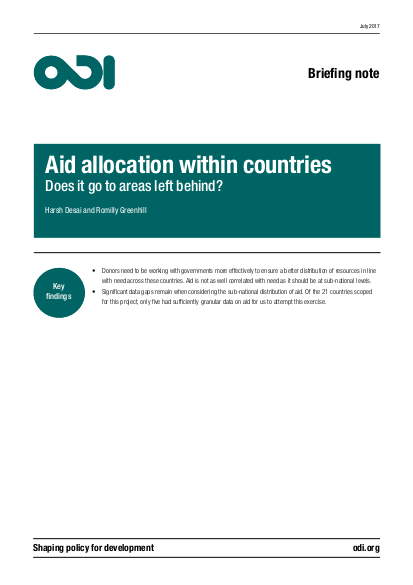
Much attention has been paid to aid allocation across countries, including whether aid should target poor people or poor countries. There has been less focus on where aid is spent when it reaches recipient countries, at sub-national levels. This is becoming an increasingly important issue in the context of the ‘leave no-one behind’ agenda. This short note presents new analysis on the relationship between aid allocation and sub-national estimates of poverty in four countries: Afghanistan, Bangladesh, Honduras and Nigeria. We also consider health aid and health access in two of these (Honduras and Nigeria). These countries have been selected because all of them will present their National Voluntary Reviews on progress towards the Sustainable Development Goals at the July 2017 High-Level Political Forum.
Two broad conclusions can be drawn from the analysis:
- Donors need to be working with governments more effectively to ensure a better distribution of resources in line with need across these countries. Aid is not as well correlated with need as it should be at sub-national levels.
- There remain significant data gaps when considering the sub-national distribution of aid. Of the 21 countries scoped for this project, only five had sufficiently granular data on aid for us to attempt this exercise.
